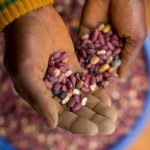The genocide against the Tutsis took place over three months in the spring of 1994. In just 90 days, more than 800,000 people were killed, many at the hands of their neighbors and friends. In its wake, the genocide left hundreds of thousands of survivors hurt and angered. The brutality was and remains difficult to fathom.
BEFORE
1994 was not the beginning of the genocide; in reality, hostilities had been mounting for decades. The tensions began during Belgian colonization in the early 1900s, when the minority Tutsis were favored and considered superior to the majority Hutus in the Belgians’ ethnically-based hierarchy. As a result, Tutsis benefited from better jobs, educational opportunities, and political status.
Hutu resentment increased and eventually gave way to violence. In 1959, Hutu groups killed more than 20,000 Tutsis, with 330,000 more fleeing Rwanda for the neighboring nations of Uganda, Tanzania, Democratic Republic of the Congo, and Burundi. A few years later in 1962, Belgium gave Rwanda formal independence and left Hutus in control of the new government. The Hutus in power eventually installed Major General Juvenal Habyarimana as President of their new republic. The minority Tutsis, formerly perceived as oppressors, were now on the receiving end of discrimination and violent acts.
With support from some moderate Hutus in Uganda, Tutsi refugees formed the Rwandan Patriotic Front (RPF) with an aim to overthrow Habyarimana and return to their home country. Attempting to improve his waning popularity, Habyarimana exploited the RPF’s threat. As a result, many Tutsis still living in Rwanda were accused of being RPF collaborators and were arrested.
DURING
On the evening of April 6, 1994, President Habyarimana’s plane was shot down. To this day, who ordered the assassination remains a mystery, but they were undoubtedly prepared to use his death to gain political power. The Hutus publicly blamed the RPF, and a systematic killing spree began. Overnight, roadblocks were put up and thousands patrolled the streets with machetes, guns, and clubs. Government radio stations encouraged civilians to pick up arms against their Tutsi neighbors and promised great rewards. Three months later, 800,000 Tutsis and moderate Hutus had been slaughtered.
On July 1, 1994, the RPF captured Kigali, shifting the power dynamics and ending the genocide. About two million Hutu genocidaires and others fled the country to Congo fearing reprisals. A new President, Pasteur Bizimungu, was installed, soon to be succeeded by the winner of Rwanda’s first legislative election in 2000, Paul Kagame, a former RPF commander who is still President today.
AFTER
Between 250,000 and 500,000 women were raped as part of the 1994 genocide against the Tutsis, which is believed to be a cause of the present AIDS epidemic in Rwanda. Following the genocide and the ensuing HIV/AIDS epidemic, more than 600,000 children were left orphaned in Rwanda by 2001. There was virtually no psychological care for anyone in Rwanda after the genocide, despite the enormous trauma suffered by almost everyone in the nation. The country’s social and economic infrastructure struggled to uplift those who had lost the most.
Nevertheless, there is hope in Rwanda. Despite widespread devastation, the people of Rwanda have chosen to heal and work together to find a better future for their nation. Rwanda’s people have been on a long journey of forgiving, growing, and overcoming. Since the genocide, Rwanda has been rebuilding itself. Many people involved in the genocide were prosecuted, given the death penalty, or imprisoned. Community-led justice and reconciliation initiatives have helped heal many broken relationships between neighbors. The educational system is strengthening. The economy is rapidly growing. Rwanda has become a leader among Sub-Saharan African nations, and gained credibility across the world. There is reconciliation in Rwanda and hope for a strong and united future.




